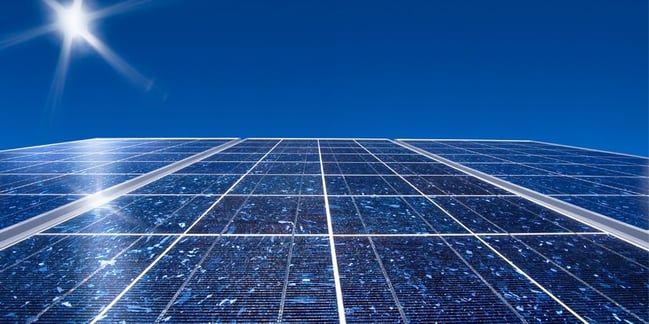 If security during a power outage is a concern for you, it may be time to consider your options for alternative energy sources.
If security during a power outage is a concern for you, it may be time to consider your options for alternative energy sources.
Any business that has experienced loss during a power outage knows the frustration. Your security systems are down, your business is vulnerable, and assets can easily be lost if you have been struck with a natural disaster or some other event that has left you without power for an extended period of time. With power grids susceptible to both man-made and weather-related threats, many organizations and private homes are moving toward the benefits and safety of solar energy to keep security systems autonomous 24/7.
One of the main benefits that draws organizations to make the switch to solar is the idea of using primary and renewable energy. Aside from the cost of the panels themselves, the energy source is free and easily accessible while creating no pollution. While costs of the panels vary between manufacturers, the feeling of "owning" their power source appeals to many organizations weary of paying exorbitant electric bills each month. Some states even permit solar panel owners to "sell" electricity back to the electric company when excess energy is created that surpasses the needs of the building. So how does this relate to your security system? Think about the things within your organization that draw on power the most. The systems that have to be running every hour of every day in order to keep the business running are also costing you a fortune and sucking up precious energy in the process, especially your surveillance. The cameras have to be running all the time, as do the servers and monitors connected to them so if your carbon footprint is as important to you as your security system, your surveillance system should be the first thing linked to this energy source. A steady stream of power is absolutely essential, unless you want to face the prospect of having these crucial systems down during an emergency when you need them the most.
A solar power IP camera works independently of the power grid, with a panel attached directly to the camera itself. Two panels are found to be the most favorable configuration for most users, with the directions shifting depending on the season and position of the sun. The camera functions remotely and can transfer data through any internet connection available. The panel collecting the solar energy and converting it to electricity stores the power in either a deep cycle or lithium-ion battery pack in case sunlight is disrupted by weather or seasonal changes. Yes, even in Alaska where daylight hours can be scarce during winter, you can still utilize solar energy for your security system as long as there is a solar energy source for a brief period each day. The camera is specifically built for extreme environments and the average temperature range is from -22 °F to 140 °F. Night vision, smart video analytics, and higher image quality are also becoming relatively standard on solar cameras.
In addition to your surveillance, having your access control (or your entire building, for that matter) wired to solar panels will do nothing but benefit you when the power grid is down. Checking with your city and state before opting for solar is wise, and some states even offer incentives for using solar panels. Taking the step into using solar energy to power your business ensures your security system is always active and, in turn, ensuring you are always protected.
